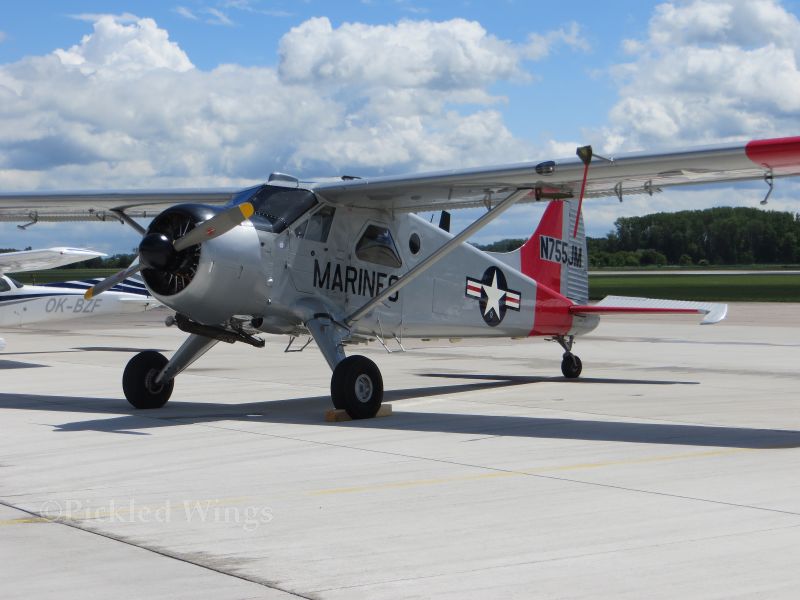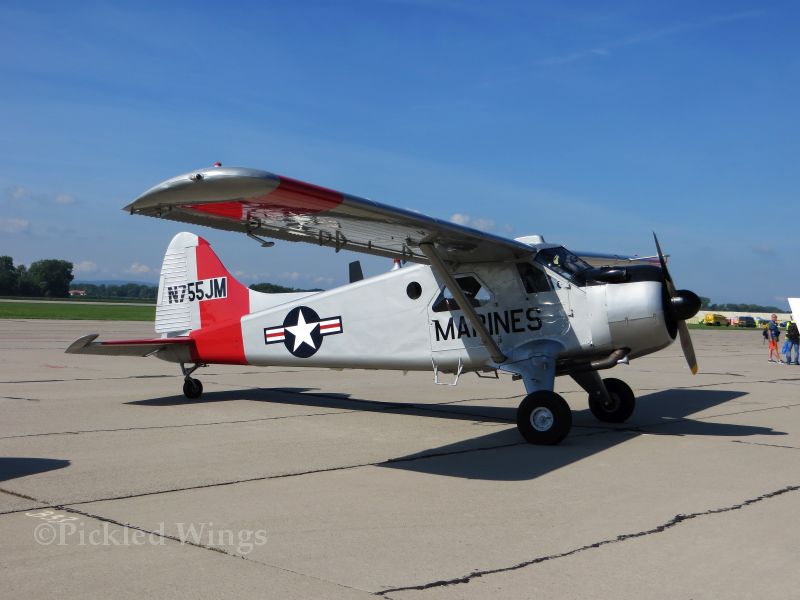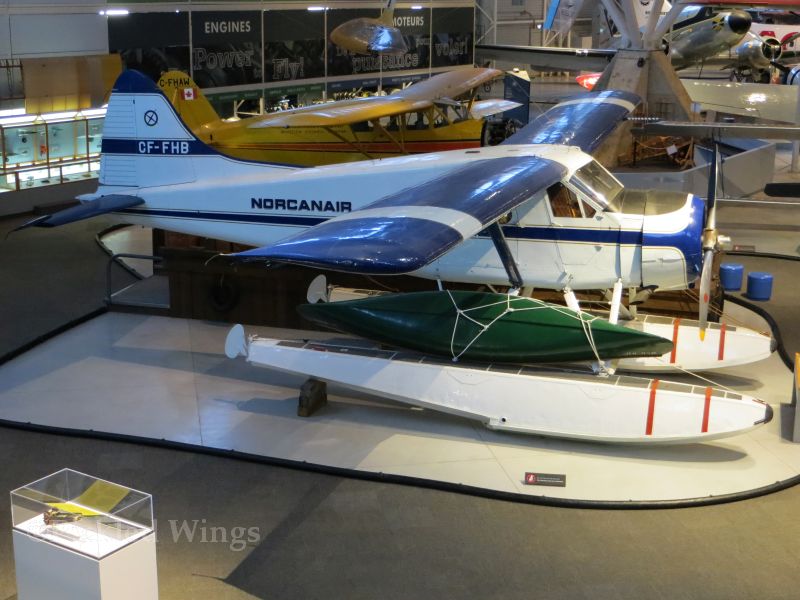Innovative, Industrious and Iconic
Bush flying has been an integral and inextricable part of Canada’s aviation scene from the very beginning. With vast areas of harsh and unforgiving land inaccessible by any other means than air; it is not the least bit surprising that the world’s second largest country created not only the world’s first purpose designed bushplane, in the form of the Noorduyn Norseman, but also an aircraft that became a worldwide recognized icon of both bush flying and the Canadian aviation industry itself: The DeHavilland DHC-2 Beaver.
From its first flight in 1947, the Beaver has flown on every continent including both polar ice caps and served military and civilian operators in more than 60 countries. In 1987, the Beaver was named one of the top ten Canadian engineering achievements of the 20th century and was commemorated on a special edition of the Canadian 25 cent coin in 1999.
Like the Noorduyn Norseman which preceded it, the Beaver was designed and built with input from experienced bush pilots who knew precisely what was required for successful flying operations in rough and spartan conditions. The result of such close collaboration between the manufacturer and end users of the finished product resulted in an aircraft which has largely remained without peer in its category for over half a century.
Delayed Beginnings
When DeHavilland’s Canadian operation saw the need for an aircraft specially tailored to the needs of bush flyers, the Second World War was raging and they were required to dedicate their production lines to aircraft intrinsic to the war effort. As such, the actual design work and construction of the Beaver would need to be delayed until after the conflict had ended.
With a list of criteria taken from surveys conducted with bush pilots to build their new design around, DeHavilland set about creating an aircraft with excellent short take off and landing (STOL) performance and sizable reserves of engine power as highest priorities.
The new design incorporated easy conversion between wheel, ski and float landing gear and a spacious interior which could be quickly converted from passenger to cargo configurations. The new aircraft would also include cargo loading doors on both sides of the fuselage so it could be loaded from either side with ease; this feature would be particularly useful in the floatplane configuration as it meant that it would no longer matter which side of a pier the pilot moored the aircraft to for loading purposes.
The Beaver’s innovative full metal construction, a first for single engine bush planes, ensured a level of strength and durability not seen in similar aircraft which went before it.
In 1948, the Beaver found its first customer in the Ontario Department of Lands and Forests; this was little surprise as that provincial department had been an early collaborator with DeHavilland in the aircraft’s design.
After an initial slow start, sales of the aircraft gradually increased until the Korean War; a conflict that sent the U.S. Army and U.S. Air Force looking for a new utility aircraft. After a brief competition, which the Beaver easily won, the American military placed a large order for a fleet of the aircraft. This event put the Beaver on the world stage and sales rose accordingly as the aircraft’s excellent qualities became more widely known.
When production ended in 1967, over 1600 Beavers had been built.
Global Popularity and Adaptability
Through the years, the Beaver has enjoyed a constant demand for its services and abilities and has done very well in second hand markets. Spare parts are still being manufactured for the aircraft more than fifty years after its first flight and it remains a profitable machine for many small charter operators who fly into remote areas.
The Beaver has added agriculture, policing, skydiving, air taxi, air ambulance, glider tug and survey work among others to its list of vocations. Very rarely has the Beaver failed to successfully complete a task set for it.
Like any good bush plane, the Beaver has proven very adaptable to modifications and refinements in its design for a variety of purposes. Some of those modifications have been subtle while others so extensive as to include complete rebuilding and re-designation of the aircraft.
Here is a Brief overview of the major variations in the Beaver family:
Beaver I/ Beaver Mk.I / U-6
The baseline Beaver variant powered by war surplus Pratt and Whitney radial piston engines.
Beaver Mk.I was the British Army designation while the U.S. Army initially designated it as the L-20 and later as the U-6.
Turbo Beaver III
A DeHavilland built variation which replaced the piston engine with a turbo prop unit. These were built prior to the production line closing.
Kenmore Beaver
A Turbo prop conversion of the aircraft carried out by Kenmore Air of Washington, USA.
DHC-2T Turbo Beaver
Re-manufactured and improved turbo prop powered variant produced by Viking Air of Victoria, Canada
The Beaver Today
While some Beavers have found their way into museums and the aircraft is in demand by vintage aircraft operators, many examples of the aircraft are still being put to work and earning profit for their business operators. If you know where to look, it shouldn’t be difficult to find a Beaver still earning its keep somewhere out there.
The type certificate for the DHC-2 Beaver, as well as the type certificates for discontinued DeHavilland Canada aircraft from the DHC-1 Chipmunk trainer to the DHC-7 Dash 7 airliner, is held by Viking Air in British Columbia, Canada. This means there is an active source of spare parts and servicing for Beavers worldwide for the forseeable future.
An interesting joint project between Sealand Aviation of Canada and Red Aircraft of Germany was initiated in the early 2020s. The project involves Sealand converting a Beaver to be powered by a Red Aircraft A03 12 cylinder diesel engine and shows an interesting direction for the Beaver to go into the future. Diesel engines have been put on the Beaver before, but the A03 is a fully new engine design that takes advantage of the latest technologies.
Flight testing of the first A03 powered Beaver has shown the new engine to give the aircraft all around improvement in performance along with better fuel efficiency and reduced noise and exhaust emssions.
With a high proportion of the production run still flying in original or turbo prop converted form, the Beaver shows no signs of slowing down and it certainly wouldn’t be unreasonable to predict that it might still be flying in notable numbers when its design hits the century mark.
Learning More
The following link will take you to the dedicated Beaver page on the Viking Air Ltd. website.
The dhc-2.com website has a wealth of information and photos of Beavers from many eras.
If you want to follow the A03 diesel powered Beaver project, there are dedicated pages to it on the Sealand Aviation and Red Aircraft websites.




